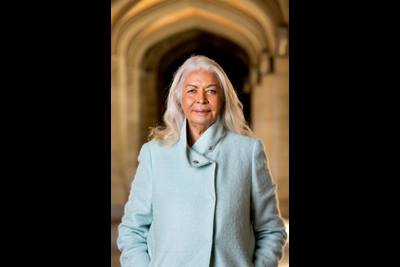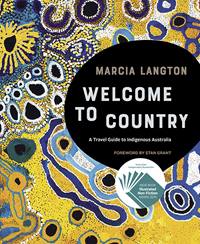"This heritage should be regarded as a national treasure"
5 Jul 2021 | Marcia Langton
Hardie Grant Explore is proud to publish First Nations voices.
To celebrate NAIDOC Week and recognise its 2021 theme Heal Country! we asked several First Nations authors and artists published by Hardie Grant about their publishing experiences and the impact of storytelling on national heritage and future generations.
Interview with author Marcia Langton

There’s still so much to say to the world about being Indigenous in Australia yet to have the opportunity to write three books published by Hardie Grant and communicate directly to the world feels like I am making good progress. I am writing against the great burden of racism and more than correcting the racist myths, I am giving my audience the tools for understanding Indigenous Australians and rise above the din of the daily debates about whether we are fully human, deserving of recognition of our status as the First Peoples of Australia, descended from ancestors who came more than 65,000 years ago. The legacy of thousands of generations of people who made our countries special and beautiful is a precious one. The people who live in our lands should know about the places and unique cultural riches that we inherited from them.
What do you most hope readers will take away from reading your books?

While I was in lockdown in Naarm through most of 2020 and for weeks in the first half of 2021, I longed more than ever to go out bush, to breathe in the smell of country, walk in my favourite landscapes and stand under a big sky. It became obvious that everyone else in lockdown had similar fantasies about escape from our incarceration. Some people who were able to leave their cities and travel, go camping and get out bush, wrote to me about how much they enjoyed and used the first edition of Welcome to Country. This Indigenous guide to country has become an important book in our lives – I even refer to the entries in Part 2 myself! I hope readers will find it to be handy reference guide with as much information as they need to have memorable experiences with Aboriginal and Torres Strait Islander people and places, art, books, theatre, dance, stories and music. I want readers to take away a sense of the richness and complexity that is available to them, if they want to know. For many, reading Welcome to Country is a first encounter with a world that I know well, but which school and university education has not prepared them, especially people of my generation. Younger generations will be familiar with much of the content of Welcome to Country and want to know why some people, performances, films, TV programs, events or music are not mentioned. The answer is simple: there is simply too much, and we could mention only the highlighted instances while also noting that there is much, much more.
How do books and shared stories impact future generations and our national heritage?
I cannot think of a book that hasn’t had an impact on me, for good or bad. Reading the written works of others has taught me a great deal about how others think and argue, and why it is important to be open-minded. Every book leaves a legacy for future generations. I hope Welcome to Country becomes a source of understanding so that all Australians have a grasp of the great legacy that Indigenous people have left us from millennia of living in and shaping our countries. This heritage should be regarded as a national treasure but is too often treated with contempt and destroyed. The impact on our biodiversity of this disregard for the environments and habitats of wildlife is obvious for all to see. Less obvious is the human and intangible heritage that is endangered because of ignorance or lack of understanding: our songlines, sacred narratives, sacred design and wealth of knowledge about the country left to us by ancestors. I want readers to understand these cultural and natural treasures that they too can experience, and experience more fully with an introduction to their Indigenous cultural meanings.
